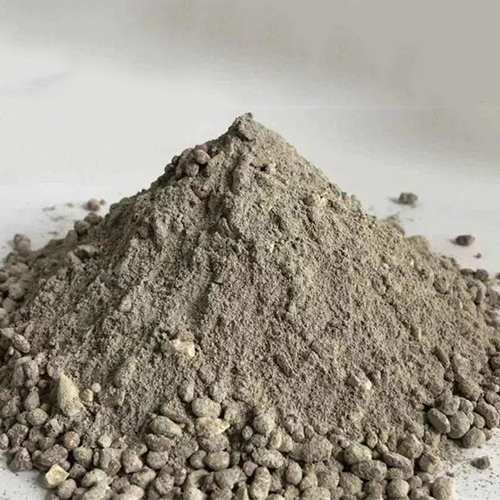Unshaped refractory material is a new type of refractory material that does not require firing. Its development has been rapid, with Japan, the United States, and Germany producing over one-third of the total output of refractory materials. Its usage has expanded from steel rolling industry furnaces to high-temperature kilns used in steelmaking and ironmaking, solving some critical equipment lining problems.
Definition of Unshaped Refractory Material
The term “Unshaped Refractory Material” refers to a type of refractory material that is formulated with granular and powdery materials, as well as bonding agents, without the need for forming and firing. The aggregates and admixtures are used in combination with bonding agents to create this material. These materials can be transformed into pastes, muds, or loose shapes, which is why they are also known as loose refractory materials. The seamless integral structures that they form have led to them also being called integral refractory materials.
Typically, unshaped refractory materials are composed of granular and powdery refractory materials, which can be made from a variety of materials depending on their intended use. To bind these materials together, binding agents are generally added in appropriate varieties and quantities, along with small amounts of plasticizer to improve their plasticity. Additionally, various additives such as accelerators, retarders, fluxes, and anti-shrinkage agents may be added to meet specific requirements.
Classification of Unshaped Refractory Materials
Unshaped refractory materials come in many types that can be categorized based on the refractory material or the binding agent used. Castables, also known as castable refractory materials, are one type that uses binders to form a moldable mixture that can be poured and then hardens into a refractory shape. Plastics, or plastic refractory materials, contain a high proportion of plastic clay that gives them their moldable properties, and they can be shaped into various forms without cracking or breaking. Ramming materials, also known as ramming refractory materials, are typically used for the lining of induction furnaces and can be packed into place without the need for a mold.
Spraying materials, or sprayed refractory materials, are used to create a lining on the surface of a substrate, while projection materials, or projected refractory materials, are used for the construction of large refractory structures. Refractory mud is a type of unshaped refractory material that can be used for patching and repairing refractory linings. Refractory coatings can also be considered as a type of unshaped refractory material.
Characteristics of Unshaped Refractory Materials
The chemical and mineral composition of unshaped refractory materials mainly depends on the granular and powdery refractory materials used. Additionally, it is closely related to the variety and quantity of binding agents. The density of the structure or product made of unshaped refractory materials is mainly related to the composition of the material and its ratio. At the same time, it also depends largely on the construction method and technology.
Generally speaking, compared with sintered refractory products of the same material, most unshaped refractory materials have a higher porosity rate during forming and even after firing; some of the properties of the structure or product before firing may also change due to chemical reactions, such as a slight reduction in intermediate temperature strength; due to the existence of binding agents and other non-high-temperature stable materials, their volume stability at high temperatures may be slightly lower; due to their higher porosity rate, their erosion resistance may be lower, but their thermal shock resistance is generally higher.
Typically, the production of unshaped refractory materials only involves the preparation of granular and powdery materials and the mixing of the admixture, which is simple in process, has a high yield of finished products, is quickly supplied, and has a low heat consumption.


